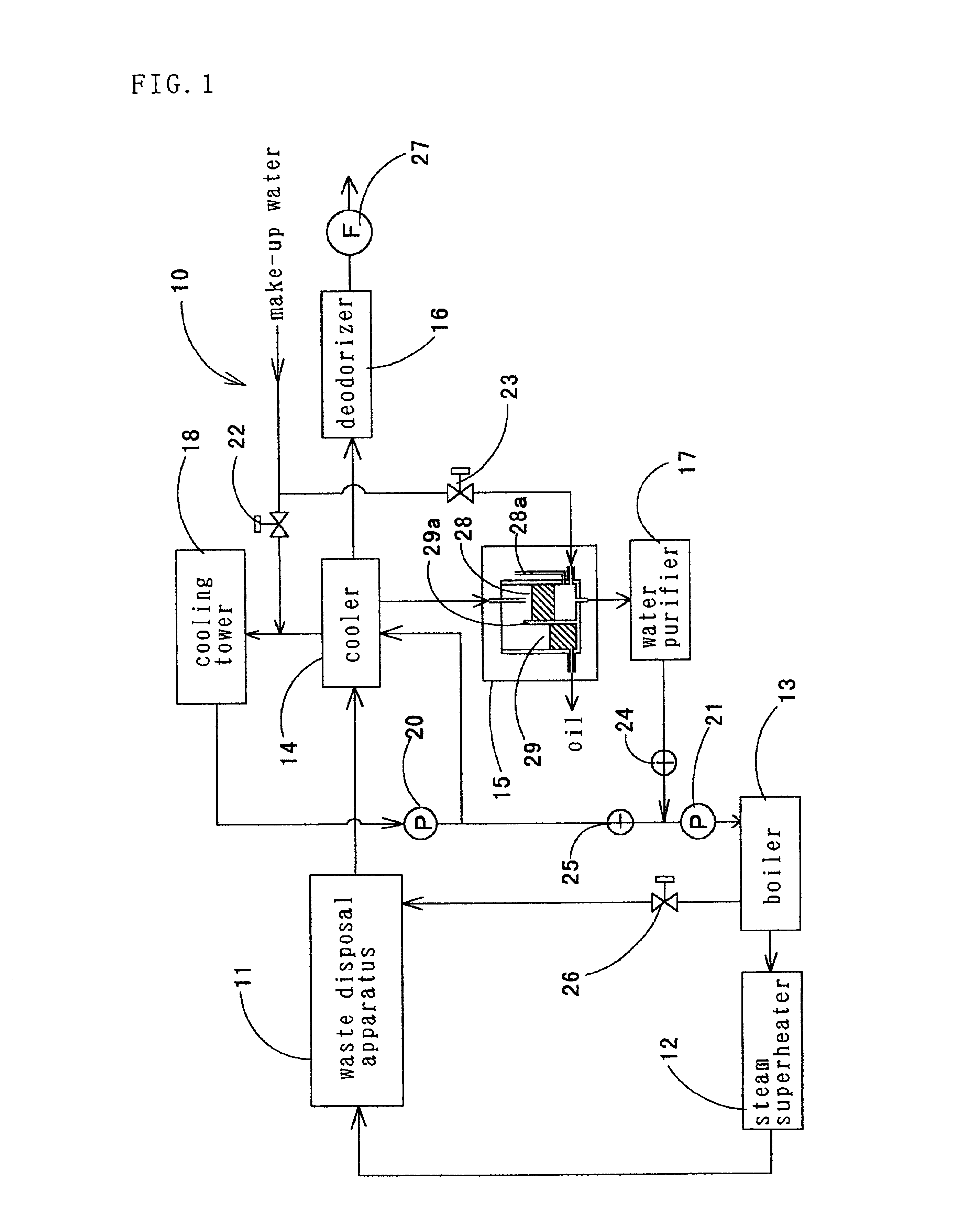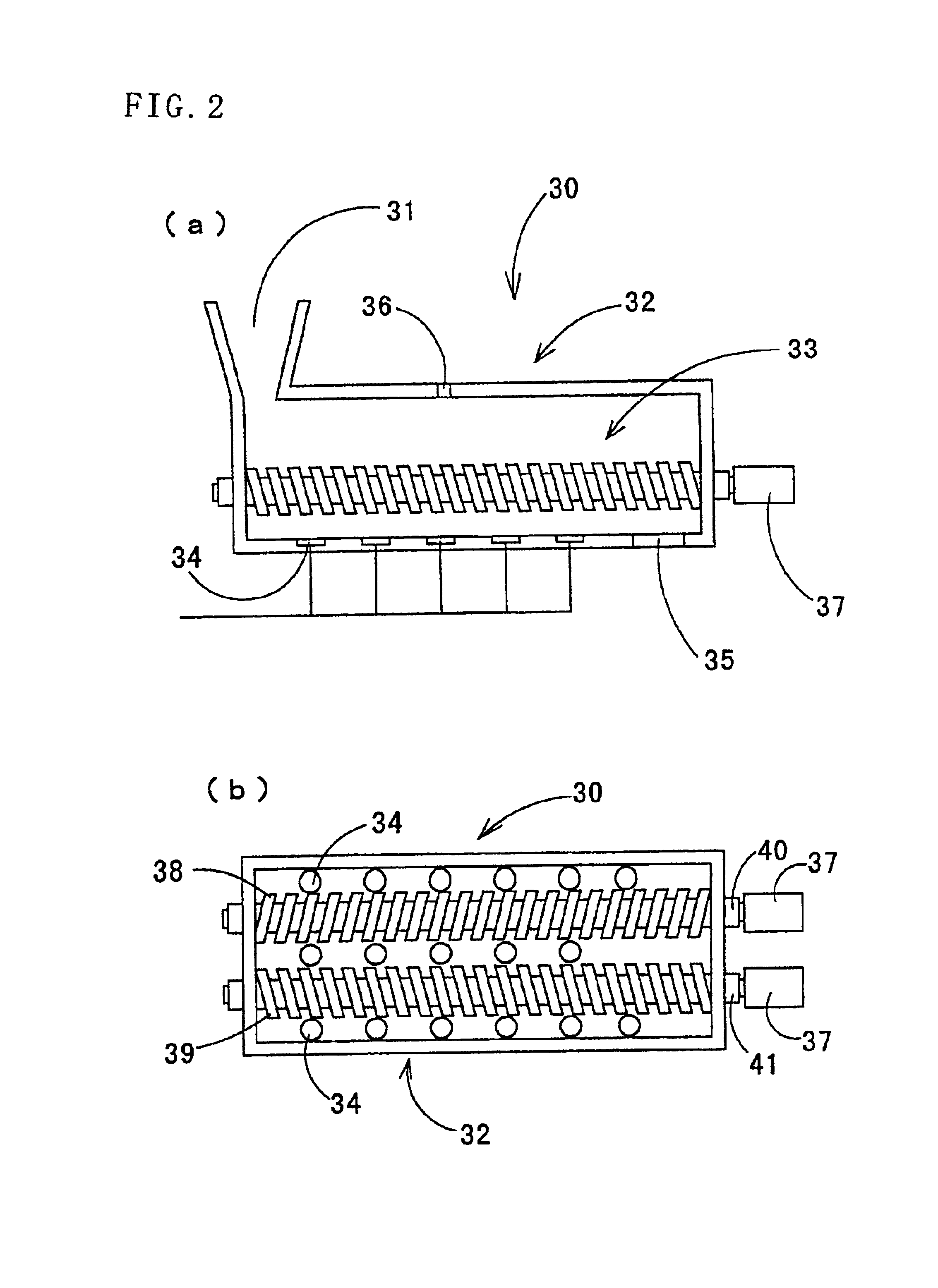Waste treating method
a technology of waste treatment and waste, which is applied in the direction of combustible gas production, separation processes, products, etc., can solve the problems of increased heat resistance of the facility, difficulty in substantially and unpreferable high-temperature steam below 510° c. , to achieve the effect of reducing the amount of waste such as garbage safely and efficiently
- Summary
- Abstract
- Description
- Claims
- Application Information
AI Technical Summary
Benefits of technology
Problems solved by technology
Method used
Image
Examples
second embodiment
As shown in FIG. 3, a waste disposal apparatus 50 of a second embodiment includes a conveyor type transfer device 52 having a belt 51, a plurality of support members 53 provided on the belt 51 moving in the horizontal direction at a predetermined intervals, and buckets 54 each of which is hung by the support member 53 and into which wastes are put while the bucket 54 keeps its posture in a fixed direction. The waste disposal apparatus 50 can have a closed construction wholly or at a specific portion as necessary. Also, the waste disposal apparatus 50 is configured so that high-temperature steam of a predetermined temperature is blown along the waste charging direction by using the steam superheater 12, or the temperature in the apparatus can be controlled by blowing cooling steam etc. from the boiler 13. The bucket 54 and the belt 51 are constructed by many porous sections or meshes to cause steam to pass through easily, so that the wastes put into the bucket 54 and steam can effect...
third embodiment
As shown in FIGS. 4(a) and 4(b), a waste disposal apparatus 60 of a third embodiment is substantially disk shaped as a whole so that substantially fan shaped trays 61 in which wastes are put can be revolved on the horizontal plane, and includes a rotary table 62 on which the trays 61 are put, and a drive unit, not shown, for driving the rotary table 62. The waste disposal apparatus 60 can have a closed construction wholly or at a specific portion as necessary. Thereupon, the temperature of every portion on the rotary table 62 can be controlled so as to be a predetermined value by blowing high-temperature steam having been regulated to a predetermined temperature and a predetermined amount by the steam superheater 12 along the revolving direction of the tray 61 configured by many porous sections or meshes, or by blowing cooling steam etc. from the boiler 13. For example, the rotating motion period and the standstill period are repeated alternately, and during the standstill period, e...
PUM
| Property | Measurement | Unit |
|---|---|---|
| temperature | aaaaa | aaaaa |
| temperature | aaaaa | aaaaa |
| temperature | aaaaa | aaaaa |
Abstract
Description
Claims
Application Information
 Login to View More
Login to View More - R&D
- Intellectual Property
- Life Sciences
- Materials
- Tech Scout
- Unparalleled Data Quality
- Higher Quality Content
- 60% Fewer Hallucinations
Browse by: Latest US Patents, China's latest patents, Technical Efficacy Thesaurus, Application Domain, Technology Topic, Popular Technical Reports.
© 2025 PatSnap. All rights reserved.Legal|Privacy policy|Modern Slavery Act Transparency Statement|Sitemap|About US| Contact US: help@patsnap.com



